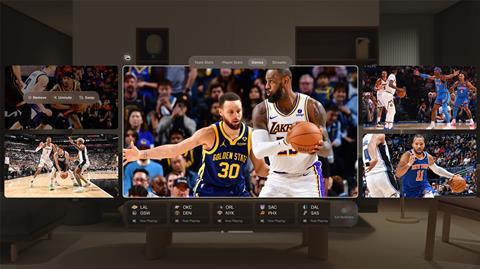The world of technology is constantly evolving, and so are the terms we use to describe it. Virtual reality (VR) has undergone a rebranding as spatial computing, signaling a renewed interest and potential for innovation. Mark Mayne delves into the latest advancements shaping the landscape of volumetric production in 2024.
Recent developments suggest a shift in the tide, with major players unveiling a new generation of VR and spatial computing hardware. But amidst this wave of innovation, the question remains: will we finally witness a breakthrough in a field that has seen its fair share of false starts? Let’s explore the key innovations driving the evolution of spatial computing.
Leading the charge is Apple’s Vision Pro, capturing attention not only for its impressive specs but also for its market impact. Priced at $3.5k, the Vision Pro boasts MicroOLED panels that deliver a stunning 4K viewing experience, surpassing competitors like the Meta Quest 3 and HTC Vive Pro. Apple’s inclusion of video pass-through for augmented reality (AR) functionality underscores its commitment to immersive experiences, aligning with CEO Tim Cook’s vision of the future of AR.
At CES2024, Qualcomm made waves with its Snapdragon XR2+ Gen 2 VR chipset, promising 4.3K spatial computing at 90 frames per second. Partnering with Google, Qualcomm hints at future VR endeavors, signaling an exciting future for the industry.
Meanwhile, Sony’s collaboration with Siemens has resulted in a VR/AR headset tailored for creatives, featuring high-quality 4K OLED Microdisplays. Scheduled for release later this year, this immersive spatial content creation system aims to empower artists and designers.
However, hardware is just one piece of the puzzle. The ecosystem surrounding spatial computing is crucial for its widespread adoption. Apple’s promise of over 600 immersive apps and games for the Vision Pro, along with partnerships with sports leagues and entertainment giants, signals a vibrant content ecosystem in the making.
Furthermore, advancements in volumetric formats, exemplified by V-Nova’s acquisition of Parallaxter, promise to revolutionize content creation and delivery. With the ability to render 6DoF images from standard pipelines, volumetric formats herald a new era of immersive storytelling.
From automotive design to film production, the real-world applications of spatial computing are vast and varied. Companies like ATS are leveraging VR to design sets for major events, showcasing the technology’s potential for enhancing communication and streamlining workflows.
As spatial computing transitions from novelty to necessity, the future looks promising. With cutting-edge hardware, expansive ecosystems, and real-world use cases, spatial computing is poised to redefine how we interact with technology and experience the world around us.
In essence, we stand at the threshold of a new era of immersion, where the boundaries between the physical and digital worlds blur, ushering in a future limited only by our imagination.















































